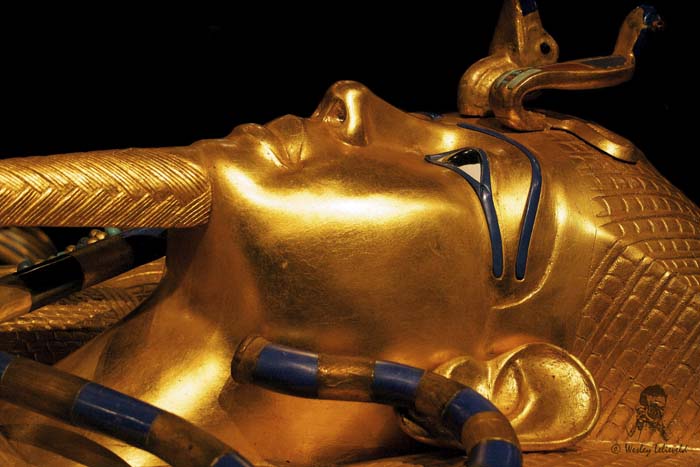Food Economy: Historic Famines Across China, India, Ireland, Russia and the Ukraine
Following up on Chinese Economy: A Brief History of Agriculture & Irrigation, this week we’ll discuss 10 historic famines that have affected countries and individuals around the world.
“Too often, famines and mass atrocities that involve forced starvation have been studied separately. Specialists in food and agriculture tend not to analyze war and genocide.”
---
A famine is an acute episode of extreme hunger that results in excess mortality due to starvation or hunger-induced disease and they’re caused by a variety of factors: conflict, government policies, economic downturns, climate change, poverty, drought and natural disasters. They’re usually accompanied or followed by regional malnutrition, starvation, epidemic, and increased mortality.
Currently, China, India, the U.S., and Brazil are the world's top four food-producing countries, sharing the advantages of large populations, ample land area, and climate zones suitable for growing a variety of crops. They also rank in the top 10 by land area.
China is the world's largest grain producer, yielding a quarter of the global grain output and leads the planet in the production of cereals, cotton, fruit, vegetables, meat, poultry, eggs, and fishery products.
Much of India's output, the world's second-largest country by population, is produced by farmers and consumed locally. India is the world's largest producer of milk, jute, and pulses (a class of legumes that includes dry beans, lentils, and chickpeas). It’s the world’s second-largest producer of rice, wheat, sugarcane, fruit, vegetables, cotton, and groundnuts.
The U.S. ranked third in 2020 agricultural output. Corn, soybeans, dairy, wheat and sugar cane were the top five U.S. agricultural commodities by value the same year.
Brazil is the world's fourth-largest food producer and second-largest importer; it is heavily dependent on imports by China.
The Great Chinese Famine is considered largest famine in human history, taking place between during 1959-61. Although drought was a contributor, the famine had overwhelmingly ideological causes, rating alongside the two world wars.
Between the spring of 1959 and the end of 1961 some 30 million Chinese starved to death and about the same number of births were lost or postponed.
The origins of the famine can be traced to Mao Zedong's decision to launch the Great Leap Forward. This mass mobilization of the country's huge population was to achieve, in just a few years, economic advances that took other nations many decades to accomplish. Chairman Mao made steel production the centerpiece of this effort. Tens of millions of farmers were ordered to mine local deposits of iron ore and limestone, to cut trees for charcoal, to build simple clay furnaces, and to smelt metal. Farmers were forced to abandon all private food production, and newly formed agricultural communes planted less land to grain, which at that time was the source of more than 80% of China's food energy.
Striking a decade after the Qing government (1644-1911) suppressed three mid-century rebellions that had threatened to topple the dynasty, the Northern China Famine of 1876 presented a serious crisis affecting the provinces of Shanxi, Zhili, Henan, Shandong, as well as northern Jiangsu, which were already beleaguered by foreign aggression, internal unrest, and fiscal woes.
Beginning in the 18th century, Ukrainian territories were divided between the Austrian and Russian Empires. In the aftermath of World War I and the overthrow of the Russian monarchy in February 1917, Ukraine set up a provisional government, declaring itself the independent Ukrainian People's Republic in January 1918.
In 1932 and 1933, millions of Ukrainians were killed in the Ukraine Famine of 1932. Known as the Great Ukrainian Famine, Holodomor (or “death by hunger”), is recognized as an act of genocide engineered by the Soviet government of Joseph Stalin. The primary victims of the Holodomor were rural farmers and villagers, who made up roughly 80 percent of Ukraine's population in the 1930s. The most detailed demographic studies estimate the death toll at 3.9 million.
India was hit by recurrent famine from 1760 AD to till 1943 AD. As per British sources, more than 85 million Indians died in these famines which some have said to have been more of genocides done by the British Raj.
The Chalisa Famine of 1783 is believed to have originated from a series of unusual El Nino weather patterns, which resulted in a halt to the traditional monsoon seasons, leading to severe drought throughout the region. 11 million people may have died during the years 1782–1784 when severe famine caused widespread mortality in places such as Hyderabad, Southern Maratha Kingdom, Deccan, Gujarat and parts of the Madras Presidency.
Doji Bara Famine of 1789 is believed to have originated from a major El Nino event that resulted in prolonged droughts for the region, causing a complete failure of the periodic monsoons for 4 consecutive years. The famine continues to be known by locals as the “skull famine” due to the fact that bones of unburied victims littered India’s roads, fields, and streets for the duration of the event.
The major famines in Bengal in the past three centuries have been in 1770, 1866, and 1943-44. The Bengal Famine of 1943 refers to a major famine that affected the Bengal Province of British-controlled India between the years 1943 and 1944. The cause of the famine is a hotly debated, as some attribute its causes to natural disasters, whereas others argue that the famine was largely “man-made” and genocidal.
Russian Famine of 1921 was a controversial and politicized subject, and both the numbers of dead and causes of the famine were disputed. Severe drought and failed harvests, continuous war since 1914 resulted in damage to property, displacement of population, destruction of the transport system along with an economic blockade of the Soviet Union by the Allies were all contributing factors to the severity of the famine which is believed to have resulted from the Russian Revolution and Russian Civil War.
The Irish Potato Famine was a devastating period of starvation that lasted approximately seven years. Between 1845-52 Ireland more than 1 million people died and another 2 million left their homeland for Great Britain, Canada, and the United States. Within five years, the Irish population was reduced by a quarter.
The main cause of the Potato Famine was a disease which affected the potato crop, upon which a third of Ireland's population was dependent for food.
Since October 2020, the Horn of Africa has been gripped by its worst drought in 40 years as an unprecedented five consecutive rainy seasons have failed. In Djibouti, Ethiopia, Kenya, and Somalia – 22 million people currently face a severe hunger crisis after four consecutive failed rainy seasons with a fifth poor rainy season forecast by the end of the year.
The drought has brought catastrophic impact where tens of thousands have died, crops have shriveled, livestock have starved, and chronic hunger and water insecurity are widespread and growing.
A 2021 United Nations study estimates that the U.S. discards an estimated 21.3 million tons of food each year. The U.K. wastes more than 5.7 million tons of food each year, while China wastes more than 100 million tons annually. In 2019 there was more than 1 billion tons of food waste.
The agricultural sector is expected to continue to play a vital role in the global economy, as countries look to increase production to meet the demands of a growing population. China, India, the United States, Brazil, and Russia are expected to be the top agricultural producing countries in 2023.
---
Ready to invest in digital marketing for your business? Let's work together to create a plan designed around optimizing your business directory listings, while incorporating search engine optimization (SEO), content marketing, search engine marketing, lead generation and website design to ensure that your accounting practice is optimized to help you reach your goals.



